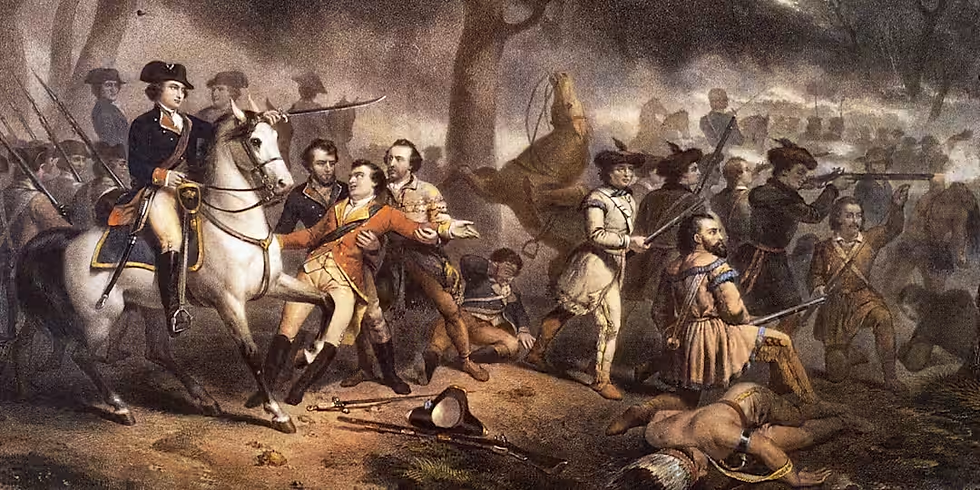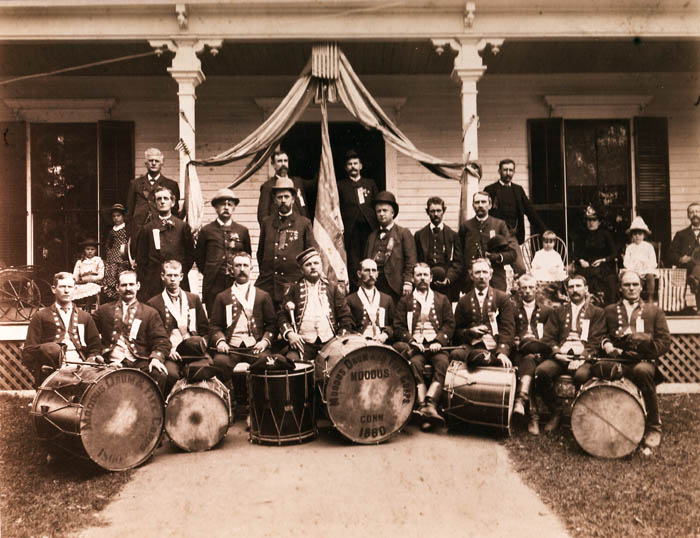Peggy’s Plunge: The Mishap That Became Wilbraham Lore
- David Bourcier
- Nov 17
- 3 min read
Updated: Nov 18
By 1740, the “Outward Commons” of Springfield, what would later become Wilbraham, was a hardy little settlement of twenty-four or so families scattered over four miles of forest and farmland. These pioneers lived in small, simply built houses, furnished with only the essentials. Their fields were narrow, their fences questioned more by wandering wildlife than by neighbors, and their weekly errands were long hikes to the mill or the nearest store.
But if anything tested their grit, it was the Sunday journey to worship. The only meetinghouse stood nine miles away in Springfield, and the route wasn’t exactly leisurely. The sun beat down in summer, snowdrifts swallowed the path in winter, and the trail (now Springfield Street) wound over Stony Hill, past Pole Bridge Brook, along the Mill River at Sixteen Acres, and finally into Springfield near old Goose Pond (now Mason Square).
Still, they were faithful people. On Sunday mornings, families set out early, men riding with their wives perched on pillion and the baby balanced up front, others walking on foot. And, as the old-timers liked to hint, the young men and women usually preferred to walk… for reasons that had nothing to do with necessity and everything to do with each other. Somehow, the long road to “Zion” never felt long at all to them.
But not everyone walked. And this is where Miss Peggy, beloved by the storytellers of early Wilbraham, enters the scene.
One winter Sabbath morning, dressed in her finest “Sabba’ day fixings,” Miss Peggy mounted her horse and headed westward on the trail that cut from what is now Stony Hill Road, somewhere between Springfield Street and the Post Road. All went well until she reached a shallow marsh crossed by a thin layer of ice.
The ice held for a split second. Then came the crack, and down went the horse, the finery, and poor Miss Peggy, straight into a pool of icy water.
Naturally, she let out a scream that echoed clearly across the frozen swamp. Her carefully arranged curls, bright ribbons, and Sabbath ruffles, perfected with such pride that morning, were instantly soaked and ruined. But while her finery didn’t survive the plunge, the story certainly did. From that day on, the spot was fondly known as “Peggy’s Dipping Hole,” a name that clung to local memory so firmly that the road running through the area is still called Dipping Hole Road today.

The marsh itself lasted more than a century before being drained around 1878. By the early 1900s, instead of Miss Peggy’s shrieks ringing across the swamp, the sound was the steady clatter of a mowing machine cutting hay where the water had once shimmered.
While tales like Peggy’s brought a touch of humor to frontier life, the larger story of the Outward Commons was one of persistence and faith. Week after week, families endured briers, swamps, and storms just to attend worship nine long miles away. The elders finally grew weary of the journey and began to dream, quietly at first, of having a place of worship closer to home.
By June of 1740, the settlement petitioned the General Court to become the Fourth Precinct of Springfield, a step that would allow them to establish their own meetinghouse. Their request was approved on January 6, 1741, by Governor Jonathan Belcher of the Massachusetts Bay Colony.
And with that, the people of the Outward Commons finally had something Miss Peggy would have appreciated: a place to gather, pray, and worship without fear of falling through the ice.




Comments